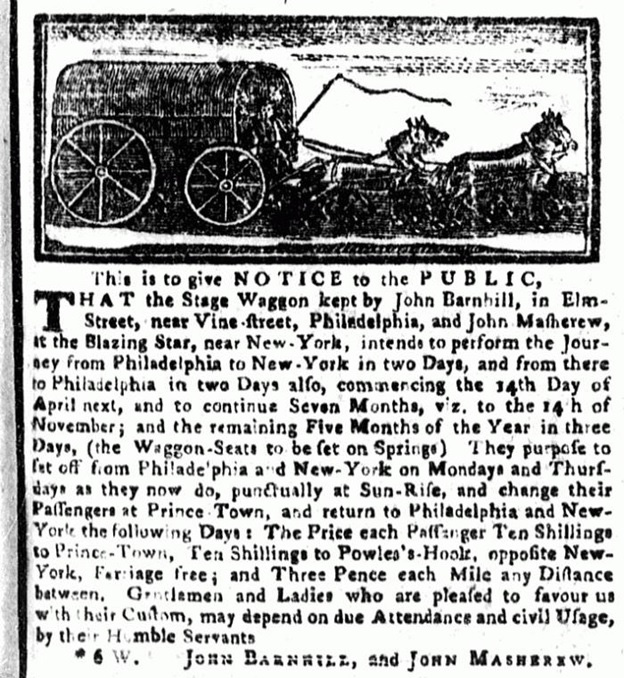
Advertisement placed by John Barnhill and John Masherew for a stagecoach between Philadelphia and New York, stopping to “change their passengers at Prince-Town,” ca. 1780
A stop for travellers: the rise of taverns and business on the pseudo-urban Nassau Street

Advertisement placed by John Barnhill and John Masherew for a stagecoach between Philadelphia and New York, stopping to “change their passengers at Prince-Town,” ca. 1780
Nassau Street has a long history as a thoroughfare. Originally, the Lenni-Lenape Native Americans used this route to travel between seasonal fishing and hunting sites on the Delaware and Raritan Rivers. They named it the Assunpink Trail. Placement between New York and Philadelphia, as well as the capital cities of East and West Jersey, made the trail attractive to European colonists, who then named it the Post Road. Throughout the 18th century, it was also known as the Old Dutch Trail, King’s Highway, York Road, and Broad Street.
With all the travel up and down it, Nassau Street naturally developed much differently than the farming communities to the east and west. It was built up with businesses to accommodate travelers, including carriage shops and taverns for food, drink, and lodging. The first Princeton tavern that we know of was built in 1734; a second stood in 1753. These were soon complemented by an emerging artisan middle class, who contributed to the comparatively urban feel of the downtown area.
In 1766, travel time from New York to Philadelphia was reduced to just two days. Princeton was the natural overnight stop, and in the last third of the century, the area saw its most significant growth to date. Between travelers, collegians, and residents, the town became a bustling spot, with taverns at the center of most social activity.
Buildings:
465 Nassau Street
Bainbridge House
Mershon House
Beatty House
Archibald Alexander House
Captain Moore House
154 Nassau Street
163 Nassau Street
274 Nassau Street